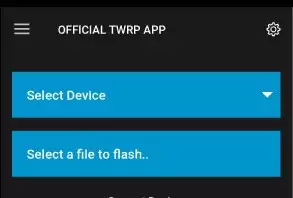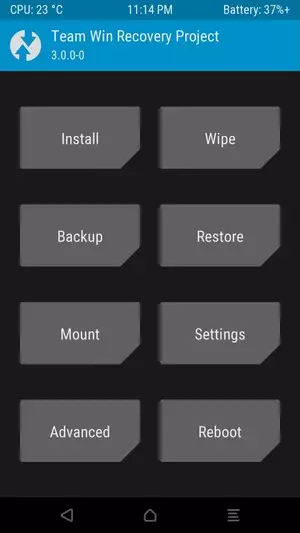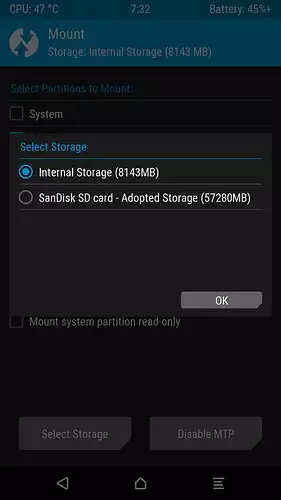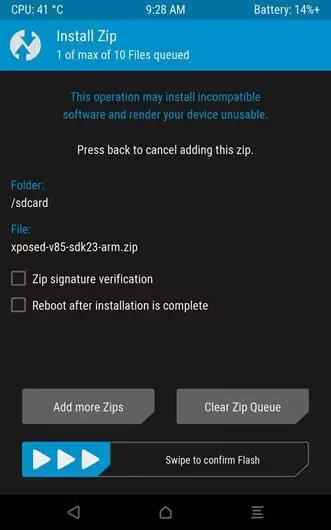Flash firmware on Gionee ELIFE F301
Mobiles >> Gionee >> Gionee ELIFE F301| Specifications | Reviews | Secret codes |
| Unlock phone | Root phone |
| Backup | Flash Firmware | Screenshot |
How to flash Gionee ELIFE F301?
Why reinstall the firmware?
The operating system keeps getting errors.
Some applications do not open, reinstalling which does not lead to a positive result.
Many applications from the Play Market do not start.
The phone restarts or shuts down by itself.
The phone slows down a lot during operation.
You want to update the firmware, as it does not suit you in terms of functionality.
Where can I find the firmware?
On the official website of the phone manufacturer.
On Internet resources where users post custom or official OS.
What should be done before installing the firmware?
Create a backup copy of all personal information: contacts, photos and transfer it to another computer.
Insert an SD card into the gadget. It must have enough memory for the firmware.
Determine your smartphone model.
Fully charge your phone battery.
Download archive with Firmware.
Installing TWRP Recovery
Download the Official TWRP App to your phone from the Play Market. And install this app.
At the first start, you need to give consent to future manipulations, as well as consent to granting the Superuser rights to the application. Check the checkboxes and press the 'OK' button.
On the next screen, select 'TWRP FLASH' and give the application root rights.

On the main screen of the application, click 'Select Device', and find your phone model.
After selecting a phone, the application will direct the user to a web page to download the modified recovery environment image file. Download the proposed *.img file.
After downloading the image file, return to the main screen of the Official TWRP App and press the 'Select a file to flash' button. Then we tell the program the path where the file loaded in the previous step is located.
Now press the 'FLASH TO RECOVERY' button and confirm your choice, press 'OK'.
The recording process is very fast, and upon completion, the message 'Flash Completed Succsessfuly!' appears. Click 'OK'. The TWRP installation procedure can be considered complete.
Copy the necessary files to the SD memory card. Using a PC or laptop card reader.
Insert a SD memory card into the phone.
To reboot into recovery, you need to enter the menu accessible by pressing the button with three stripes in the upper left corner of the main screen of the application. Select the 'Reboot' item, and then click on the 'REBOOT RECOVERY' button. The phone will reboot into the recovery environment automatically..
Firmware via TWRP

Before flashing, it is recommended to clear the 'Cache' and 'Data' sections. This will delete all user data from the device, but avoid a wide range of software errors and other problems. You must press 'WIPE' on the main screen.
You can start flashing. Click the 'Install' button.

The file selection screen is displayed. At the very top is the 'Storage' button, select the location where the firmware file is located.
Select the location where you copied the files.

Select the firmware file and click on it. A screen opens with a warning about possible negative consequences, you need to check the item 'Zip signature verification', which will avoid using damaged files during recording.
The procedure for writing files to the phone's memory will begin, accompanied by logging and filling in the progress bar.
When the procedure for installing the firmware is completed, the message 'Successful' appears on the screen.
Summary: OS: Amigo 2.5 Based on Android 4.4 KitKat; Chipset: MediaTek MT6732; CPU Speed: 1.5 GHz; GPU: ARM Mali-T760; Primary display: IPS LCD 4.7" 1280 x 720 pixels 16M colors HD, 312 ppi; Secondary display: No; RAM: 1 GB; Internal memory: 8 GB; Memory Card: MicroSD, Up to 32 GB; Primary camera: 8 MP 3264 x 2448 pixels LED flash Auto-focus; Video: 1920 x 1080 pixels; Secondary camera: 5 MP 2592 x 1944 pixels; Headphone: Yes 3.5mm; WI-FI: Yes 802.11 0; NFC: No; GPS: Yes A-GPS; Bluetooth: No; HDMI: No; Hotknot: No; USB: Yes Micro-USB 2.0; Infrared: No; Waterproof: No; Dustproof: No; Shock resistant: No; Sensors: Light sensor, Gravity sensor, Distance sensor, Compass, Proximity; Capacity: Li-Po; Stand ...
Comments, questions and answers on the flash firmware Gionee ELIFE F301
Ask a question about Gionee ELIFE F301




